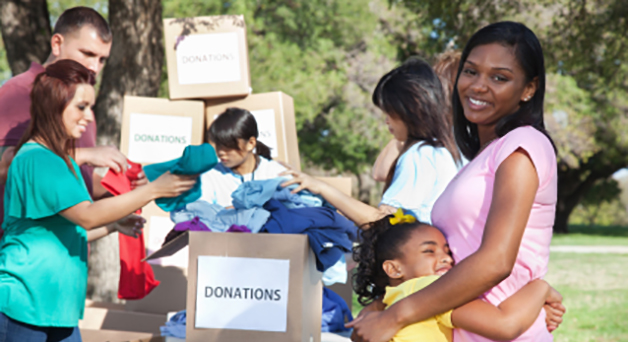Youth who receive special education services under the Individuals with Disabilities Education Act (IDEA 2004) and especially young adults of transition age, should be involved in planning for life after high school as early as possible and no later than age 16. Transition services should stem from the individual youth’s needs and strengths, ensuring that planning takes into account his or her interests, preferences, and desires for the future.
Preparedness & Recovery

Disasters are often unpredictable and can happen at any time and to anyone. They may be natural, man-made, or both. Disasters are defined by the Federal Emergency Management Agency (FEMA) as an occurrence that has resulted in property damage, deaths, and/or injuries to a community,1 and may include floods, hurricanes, earthquakes, tornados, fires, illnesses, chemical or radiation emergencies, and terrorist or bioterrorist attacks, among others.
At the end of the 20th century, disasters affected an estimated 66.5 million children each year world-wide and it is estimated that this number will continue to grow as a result of societal changes (e.g., conflicts, hunger) and climate changes.2 Around the world and in the U.S., disasters disproportionately affect poor populations—both youth3 and families—as a result of risk factors such as living in environmentally vulnerable locations, living in less stable housing, and having poor physical health.4 According to the 2010 U.S. Census, children under 18 made up 24 percent of the total U.S. population, but 35.5 percent of the people living in poverty resulting in a higher poverty rate for children under the age of 18 than any other age group.5 Further, research suggests that youth, specifically school-age youth, tend to be more severely affected by disasters than adults and may experience disasters differently due to age and other factors.6
Ensuring youth and their families know what to do in an emergency and that the unique needs and assets of youth are included in disaster preparedness, prevention, response, and recovery efforts is critical.7 While many individuals report that they are aware of disasters and their potential effects, fewer report that they have undertaken steps to plan for or prepare for disasters.8 Prevention and preparedness refer to the planning and actions that occur prior to a disaster. This may include preparing for public health threats, developing an emergency response plan, creating an emergency preparedness kit, or taking steps to address things that may cause a disaster. Response and recovery refer to actions that occur during and after disasters or emergencies. Responses to emergencies may include sheltering in place or evacuating, and recovery may include repairing damaged infrastructure, reuniting families, replacing supplies, addressing emotional responses and revising response plans. Youth-serving agencies can play an important role educating youth about disasters and teaching them coping mechanisms. Involving them in prevention, preparedness, recovery, and response efforts can help to ensure that youth, families, and communities are prepared and able to respond when faced with disasters.
1 FEMA, 1990
2 Penrose & Takaki, 2006
3 The target population for this topic is youth ages 10-24. In some cases research included in the topic focuses on a wider population including children under the age of 10.
4 Center for the Study of Traumatic Stress, n.d.
5 U.S. Bureau of the Census, 2011
6 Norris et al., 2002; Ronan, 2010
7 U.S. Department of Homeland Security, 2010
8 Redlener, Grant, Abramson, & Johnson, 2008; Ronan, 2010
Other Resources on this Topic
Agencies
Announcements
Collaboration Profiles
Data Sources
Departments
Feature Articles
Programs
Publications
Resources
Technical Assistance
Tools & Guides
Videos & Podcasts
Websites
Youth Topics
Youth Briefs
Research links early leadership with increased self-efficacy and suggests that leadership can help youth to develop decision making and interpersonal skills that support successes in the workforce and adulthood. In addition, young leaders tend to be more involved in their communities, and have lower dropout rates than their peers. Youth leaders also show considerable benefits for their communities, providing valuable insight into the needs and interests of young people
Statistics reflecting the number of youth suffering from mental health, substance abuse, and co-occurring disorders highlight the necessity for schools, families, support staff, and communities to work together to develop targeted, coordinated, and comprehensive transition plans for young people with a history of mental health needs and/or substance abuse.
Nearly 30,000 youth aged out of foster care in Fiscal Year 2009, which represents nine percent of the young people involved in the foster care system that year. This transition can be challenging for youth, especially youth who have grown up in the child welfare system.
Research has demonstrated that as many as one in five children/youth have a diagnosable mental health disorder. Read about how coordination between public service agencies can improve treatment for these youth.
Civic engagement has the potential to empower young adults, increase their self-determination, and give them the skills and self-confidence they need to enter the workforce. Read about one youth’s experience in AmeriCorps National Civilian Community Corps (NCCC).
Large groups of people tend to gather at disaster scenes and can be given constructive opportunities to help rebuild.
LAUNCH THE TUTORIAL: MANAGING SPONTANEOUS VOLUNTEERS IN TIMES OF DISASTER






